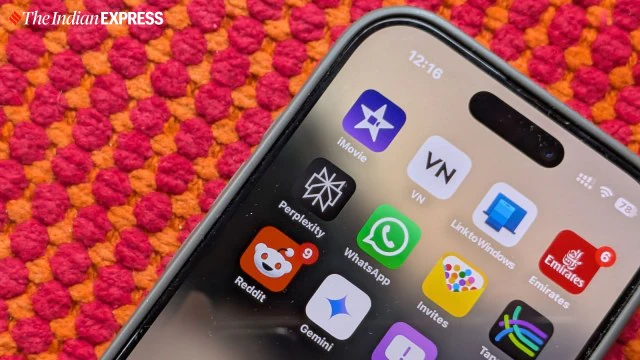Perplexity AI Voice Assistant on iPhone 16 Pro: Strengths and Shortcomings Revealed

Perplexity AI Voice Assistant on iPhone 16 Pro: Strengths and Shortcomings Revealed
The world of artificial intelligence continues to move at lightning speed, and one of the newest entries into the AI voice assistant race is Perplexity’s new AI voice assistant. Recently, I had the chance to test it out on my iPhone 16 Pro — and the experience was both impressive and revealing.
In this article, I’ll break down where the Perplexity AI assistant shines, where it still struggles, and how it compares to other AI tools currently available.
First Impressions: Sleek, Simple, and Smart
Upon downloading the app, the first thing that struck me was its minimalistic user interface. Unlike traditional voice assistants like Siri, which often feel bloated with options, Perplexity’s AI assistant is clean and straightforward.
Within moments, it was ready to respond to my voice queries without requiring complex setup processes or long tutorials. It integrated smoothly with the iPhone 16 Pro’s iOS environment, making it feel almost native.
The voice recognition was remarkably fast. It picked up my questions without needing exaggerated enunciation, and it responded quickly — usually within two seconds. The assistant could handle multi-layered questions much better than I anticipated, a sign that its natural language processing (NLP) engine is highly sophisticated.
Strengths: Where Perplexity AI Excels
1. Natural Conversations
Unlike Siri or even Google Assistant at times, Perplexity’s AI feels incredibly conversational. It remembers the context of previous questions and can continue a conversation naturally.
For example, after asking, “Who won the IPL final in 2025?” I followed up with, “Who was the top scorer?” without specifying the sport again — and it understood perfectly.
2. Rich, Factual Responses
One major highlight was the depth of information the assistant provided. Instead of offering short, vague answers, it often delivered full, well-structured summaries pulled from reliable sources.
In fact, Perplexity AI frequently cites its information, providing outbound links to reputable sources like BBC News, The Verge, or TechCrunch. This transparency is a big win for users who want to fact-check or explore topics further.
3. Multitasking Capabilities
On the iPhone 16 Pro, the Perplexity AI app could work seamlessly in the background while I used other apps. For instance, I could ask it to summarize an article while replying to emails, and it would notify me once the task was complete.
The integration with iOS 18’s multitasking features felt smooth and efficient — something not all third-party AI apps manage to do well.
4. Personalization
Another surprising strength was its adaptive learning. Over just a few days of use, the AI began tailoring its tone and style to match my preferences.
If I preferred bullet-point summaries over full paragraphs, it adapted. If I frequently asked for tech news updates, it proactively suggested them without being intrusive.
Where Perplexity AI Falters
While the overall experience was positive, there are still notable areas where Perplexity’s new AI assistant falls short.
1. Limited App Integration
One significant drawback is its limited integration with other apps. Unlike Siri, which can set alarms, send texts, and control smart home devices directly, Perplexity AI remains largely confined within its own app ecosystem.
Simple tasks like “Set a reminder for tomorrow at 9 AM” or “Play my workout playlist” redirected me back to Siri or the native iOS apps. This limitation breaks the illusion of a fully capable assistant.
2. Occasional Inaccuracies
Although it often provided detailed answers, there were moments when the AI hallucinated — that is, generated inaccurate or misleading information.
In one case, when asked about the “top movies released in early 2025,” it included a title that hadn’t actually been released yet.
This problem isn’t unique to Perplexity — even giants like OpenAI’s ChatGPT and Google’s Gemini struggle with hallucination — but it’s important for users to double-check critical information.
3. Battery Drain Concerns
Because the Perplexity app constantly listens for activation and processes queries with high computational demands, battery drain on the iPhone 16 Pro was noticeably faster compared to using Siri alone.
After an hour of moderate use, I noticed about a 12% greater battery drop than usual. While the iPhone 16 Pro boasts better battery management than previous models, heavy users might want to be cautious.
4. No Offline Mode
Unlike Siri, which can perform basic tasks offline, Perplexity AI requires an internet connection for virtually everything.
In areas with weak cellular signals or during flights without Wi-Fi, the app becomes essentially unusable. Hopefully, future updates will introduce an offline capabilities mode for basic queries.
How It Compares to Siri, Google Assistant, and Alexa
Comparing Perplexity’s AI voice assistant to established players like Siri, Google Assistant, and Alexa, some key differences emerge:
| Feature | Perplexity AI | Siri | Google Assistant | Alexa |
|---|---|---|---|---|
| Conversation Flow | Excellent | Good | Good | Moderate |
| App/Device Control | Poor | Excellent | Excellent | Good |
| Information Depth | High | Moderate | High | Moderate |
| Personalization | Strong | Moderate | Strong | Moderate |
| Offline Capabilities | None | Limited | Limited | Limited |
| Battery Consumption | High | Low | Moderate | Low |
As you can see, Perplexity AI is not trying to be a full replacement for Siri or Google Assistant — at least not yet.
Instead, it excels more as a research and conversation AI assistant rather than a pure productivity tool.
Final Verdict: A Promising Step Forward, but Not Perfect
Perplexity’s new AI voice assistant is an impressive achievement, particularly in terms of conversational abilities, information sourcing, and adaptability.
If you’re someone who frequently needs quick, factual answers or enjoys natural back-and-forth with your AI assistant, this could easily become your go-to app — especially on a powerhouse device like the iPhone 16 Pro.
However, if you’re looking for a fully integrated assistant to control your smart home devices, manage your calendar, and perform offline tasks, you’ll still need to rely on Siri (or alternatives like Google Assistant) for now.
The potential is massive, and given how fast Perplexity has iterated on its core features, I wouldn’t be surprised to see future versions tackle app integration and battery optimization head-on.






